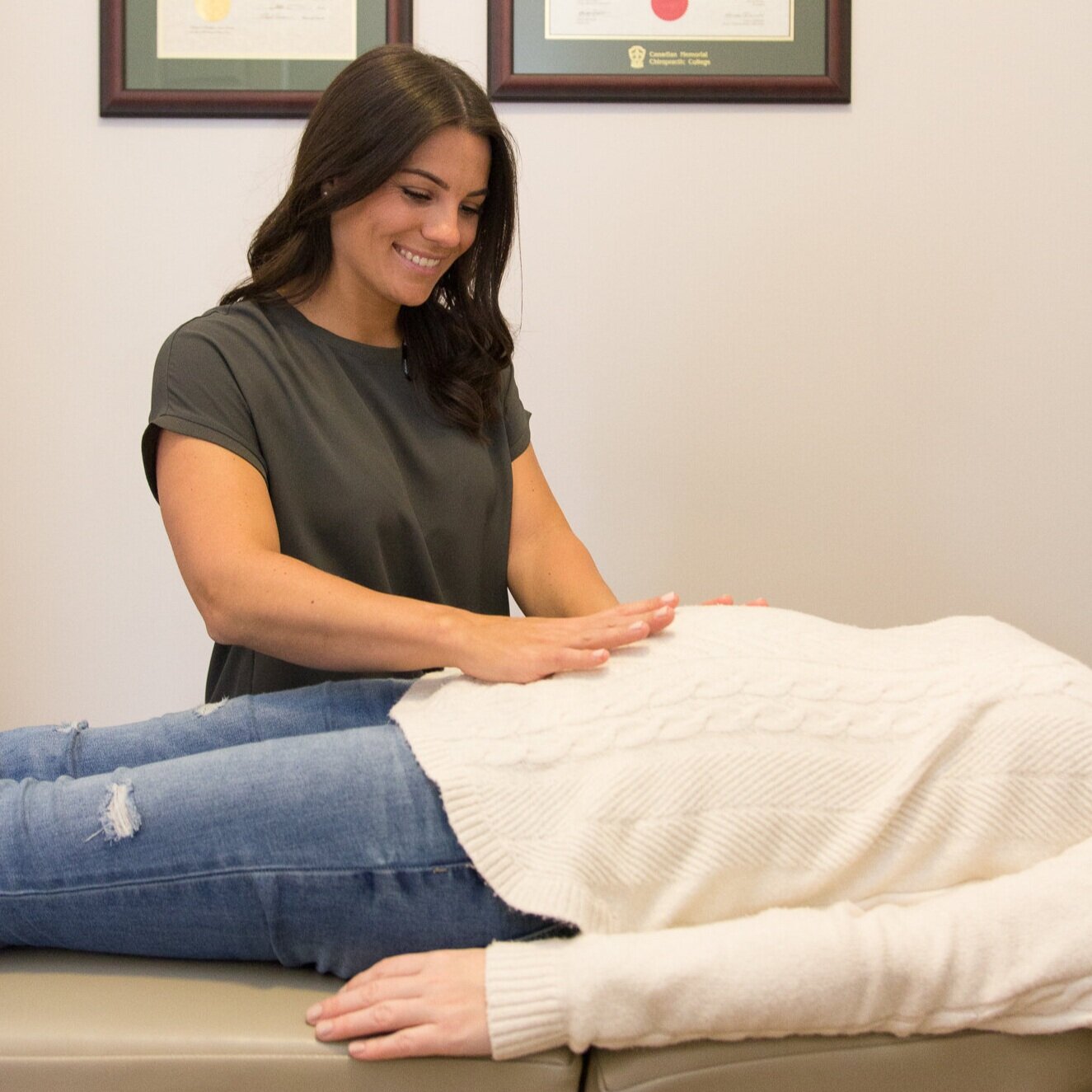Pregnancy
Our bodies endure a significant amount of physical stress to our spine and pelvis during pregnancy. A growing belly causes an outward shift of our centre of gravity which leads to postural strain, changes in breathing patterns, weakening of core muscles, as well as ligament laxity, and joint hyper- and/or hypo-mobility.
Chiropractic is a safe, effective and drug-free form of conservative care used to relieve pain and improve function during pregnancy. It may be one of the greatest times to receive chiropractic care - no matter where you are in your pregnancy!
Common Conditions Treated
Low Back Pain
Pelvic Pain and Pressure
Sciatic Nerve Pain
Round Ligament Discomfort
Upper Back, Neck Pain and Headaches
Carpal Tunnel Syndrome
De Quervain’s Tenosynovitis
The Webster Technique
Developed by Dr. Larry Webster more than 35 years ago, the Webster Technique has become a familiar term in conversations surrounding pregnancy and birth. Families are increasingly seeking out chiropractors who are proficient in this technique as a way to support a more comfortable birth experience. The Webster technique is clinically observed to be associated with improved pregnancy outcomes.
The Webster Technique aims to reduce biomechanical stress to the ligaments and joints of the spine and pelvis during pregnancy. It is a specific chiropractic analysis and adjustment (treatment) that balances maternal pelvic joints, muscles and ligaments in order to better support uterine function. Ultimately, the Webster Technique encourages optimal fetal positioning and allows for a safer, easier birth.
The Webster Technique is NOT a breech baby turning technique.
Chiropractors do not turn breech babies! As pelvic balance is achieved through The Webster Technique, this creates a more functional environment which may or may not facilitate the baby’s ability to assume the desired position while in utero. The International Chiropractic Paediatric Association (ICPA) does not endorse the use of The Webster Technique for fetal mal-position or in utero-constraint.
Our chiropractors have pursued additional training and are all certified in The Webster Technique and are members of the International Chiropractic Paediatric Association.
Labour & Delivery
Everyone’s birth experience is individual. At Basin View Chiropractic, we aim to provide you with tools, education, and resources that will help prepare your body for labour and delivery. Studies have shown that manual therapy, including chiropractic, can help decrease pain during pregnancy and labour. As part of your treatment plan, we, as chiropractors, recommend safe and effective stretches and strengthening exercises to help prepare your body for your baby’s arrival!
Postpartum Recovery
As your body recovers from one of the most physically-demanding events of your life, we are here to support you throughout your postpartum journey. Though the speed of everyone’s recovery is unique, chiropractic care received during pregnancy can help manage a more rapid recovery postnatally.
Chiropractic treatment in the postnatal period is extremely beneficial in addressing biomechanical or physical complaints that may arise as a result of postural alterations related to feeding, baby-wearing, sleep habits, etc.
As part of your care plan, we recommend postpartum rehabilitation to help with a gradual return to physical activity. CLICK HERE for more information.
FAQ
Is Chiropractic safe during pregnancy?
Yes! As mentioned above, the Webster Technique is a gentle and effective technique used by chiropractors to treat patients who are pregnant. There are several benefits to receiving Chiropractic care during pregnancy, such as improving overall function and minimizing pain and discomfort, allowing for a safer, easier birth and a quicker postpartum recovery.
How long is the postpartum period?
This varies per individual. One common misconception is that the postpartum period only lasts 6 weeks. If you have given birth via C-section, your medical doctor will likely clear you at 6 weeks post-operatively. This does not mean the post partum period ends after 6 weeks! The first 12 weeks immediately after birth is known as the “4th trimester”. This is a a time of great emotional and physical change for you and your baby. Some women may face challenges for up to 6 months postpartum, which has been labelled, “delayed postpartum period”. With that being said, should you continue to experience symptoms for several months to years after giving birth, you are not alone! As chiropractors, we are here for your support. If a referral is warranted, we will gladly guide you in the right direction, no matter where you are in your postpartum journey.
How can a Chiropractor help me with postpartum recovery?
There are a few different approaches here:
Soreness. If you experience discomfort due to compromised posture from baby-wearing, breastfeeding, or changes to sleep habits, we can treat you! Chiropractic and Massage Therapy techniques can always be tailored to suit your individual needs. For example, if you can’t lie on your tummy, we can treat you on your back, side or seated!
Rehabilitation. It is imperative that you follow instructions from a health professional on how to properly and safely rehabilitate your core after having a baby. This should be a gradual process. We see several women exercising too early in an attempt to return to their pre-baby state, which only hinders overall recovery in the long term. Ask us!
Why do I leak when I laugh, cough, sneeze, and jump?
This indicates you have an issue with your pelvic floor musculature. This is common, not normal. This commonly occurs during pregnancy due to the pressure of a growing fetus on your bladder. This should not persist later in life. It is important to obtain an assessment with your chiropractor to rule out any other possible cause of urinary incontinence, however this would warrant a direct referral to Pelvic Floor Physiotherapy! There are several exercises that can help!
Can I bring my baby to my appointment?
Absolutely! We welcome all members of your family to accompany you to your appointment if that makes you feel comfortable. If you are wondering when your child should start seeking chiropractic care, please CLICK HERE.






